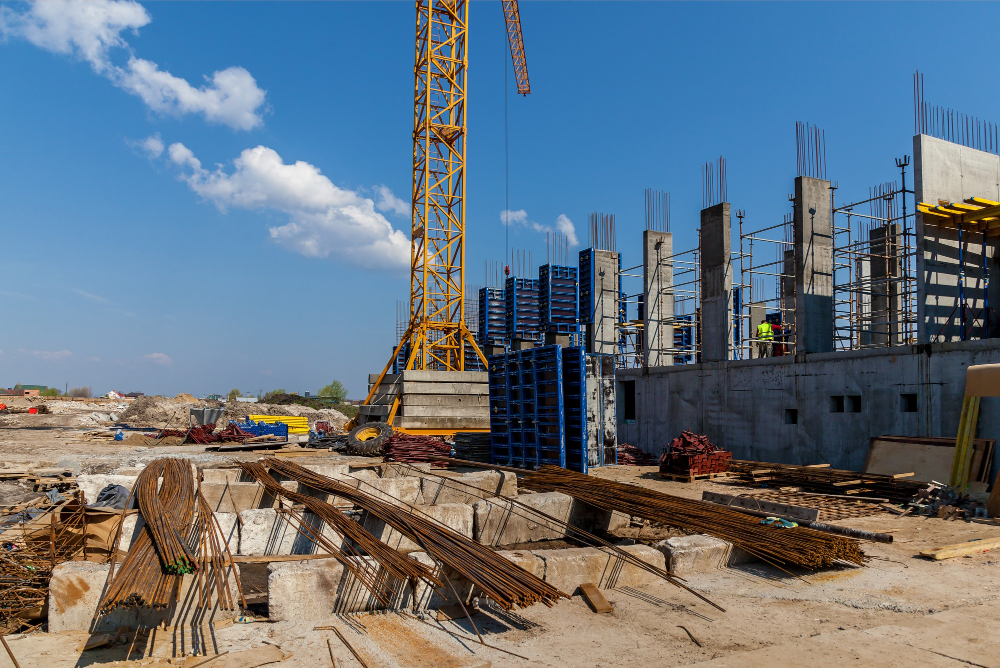Last updated on
In the face of rapidly evolving urban landscapes and the pressing need to combat climate change, the construction industry stands at a critical juncture. The growing importance of sustainable construction practices is undeniable, as they not only promise to mitigate the environmental impact but also offer avenues for long-term cost savings and resource efficiency.
However, achieving sustainability on modern construction sites is fraught with challenges. These range from the high upfront costs of green materials and technologies to the complexity of managing waste and reducing carbon footprints in a sector historically characterized by significant environmental degradation.
This article investigates innovations that showcase how responsible site management is not just reshaping the landscape of construction but also paving the way for a more sustainable and environmentally friendly future.
Modern Challenges in Site Management

The journey towards sustainable construction is paved with many challenges, each requiring thoughtful consideration and innovative solutions.
Worker and Community Impact
The impact on workers and surrounding communities stands out as a primary concern. Construction sites are often fraught with potential health hazards such as dust, noise, and volatile organic compounds (VOCs), posing significant risks to the workforce.
Moreover, the provision of essential amenities like portable toilet hire is crucial for worker welfare albeit it requires careful management to avoid environmental harm. Beyond the site boundaries, construction activities can disrupt local ecosystems and communities, leading to noise pollution, dust, and traffic congestion, thereby affecting the quality of life for nearby residents.
The continual use of resources presents another significant challenge. The construction industry is a major consumer of raw materials, exerting considerable strain on the planet’s natural resources. As the demand for sustainable building materials grows, sourcing eco-friendly alternatives becomes increasingly challenging, often due to limited availability or higher costs.
The issue with diminishing resources is compounded by the vast amount of waste generated through construction and demolition activities. The management and recycling of this waste are critical, yet often complicated by logistical constraints and the lack of standardized processes for reusing materials.
Energy Consumption
Energy consumption on construction sites is another area of concern. The operation of heavy machinery and equipment necessitates a substantial energy supply, traditionally met through fossil fuels, which contributes to the industry’s carbon footprint. Traditional methods of powering construction sites are not only unsustainable but also inefficient, highlighting the need for alternative energy solutions.
Water Usage and Pollution
Water usage and pollution are significant issues in construction site management. Construction activities require large quantities of water, leading to concerns over water scarcity and the efficient use of this vital resource.
Additionally, runoff from construction sites can carry pollutants into nearby water bodies, posing risks to aquatic ecosystems and water quality.
Addressing these challenges requires a multifaceted approach, encompassing the adoption of new technologies, materials, and practices that prioritize sustainability and minimize environmental impact.
Innovative Solutions for Sustainability

Here are suggested solutions for sustainable site management:
Digitalization and Automation
Digitalization and automation are proving to be game-changers. Building Information Modeling (BIM) stands out as a revolutionary tool, enabling precise planning and visualization of projects. BIM facilitates optimized material usage and waste reduction by allowing for meticulous planning and virtual testing of structures before construction begins.
Furthermore, the integration of automation through robots and drones on construction sites enhances efficiency and safety. These technologies minimize the need for manual labor in hazardous conditions and can significantly reduce energy consumption by streamlining tasks and reducing the time and resources required for project completion.
Circular Economy Practices
The principles of a circular economy are increasingly being applied in the construction sector, promoting the reuse and recycling of materials and thus, contributing to waste reduction.
Additionally, prefabrication and modular construction methods are gaining traction for their ability to minimize waste. These approaches allow for components to be manufactured in controlled environments, reducing excess and enabling the reuse of materials.
Renewable Energy Integration
The integration of renewable energy sources, such as solar panels, wind turbines, and biofuels, is transforming construction sites into greener workspaces. These sustainable energy solutions not only reduce reliance on fossil fuels but also decrease greenhouse gas emissions.
The potential of on-site energy storage systems further enhances this benefit, ensuring a consistent supply of clean energy and paving the way for self-sustaining construction sites.
Water Conservation and Treatment
Water conservation is another critical aspect of sustainable construction. Innovative practices such as rainwater harvesting and greywater recycling significantly reduce the demand for freshwater resources.
Additionally, advanced water treatment technologies are being developed to address the issue of construction runoff, ensuring that water leaving the site is free from harmful pollutants and thereby protecting local water bodies.
Smart Monitoring and Sensors
The deployment of smart monitoring systems and sensors across construction sites offers real-time insights into various aspects of the construction process, including energy use, air quality, and noise levels. This data can inform more sustainable practices, enabling adjustments to be made in real-time to minimize environmental impact.
Sensors specifically designed for leak detection and water optimization further contribute to efficient water use, ensuring that this precious resource is conserved.
Through these innovative solutions, the construction industry is making significant strides towards sustainability, setting a new standard for environmental stewardship in the built environment.
The Takeaway
Sustainable construction practices are essential for mitigating environmental impact, conserving resources, and ensuring the well-being of workers and communities. The adoption of innovative solutions, from digitalization to circular economy principles, holds immense potential to address the multifaceted challenges of modern construction.
Embracing these advancements promises a future where construction projects harmonize with the environment, benefiting all stakeholders involved.
Table of Contents




